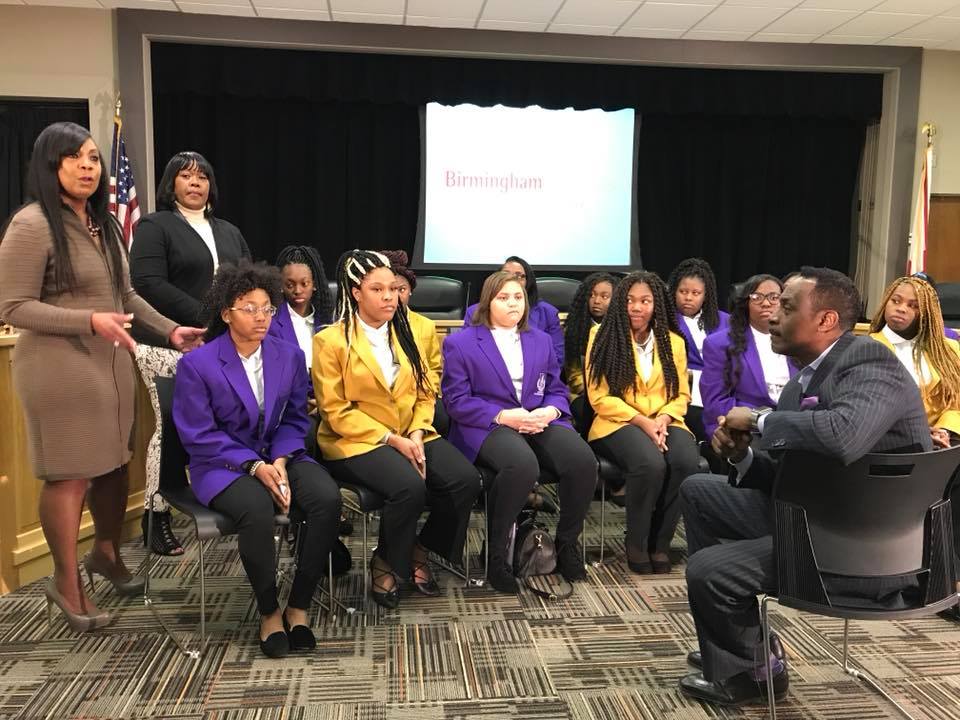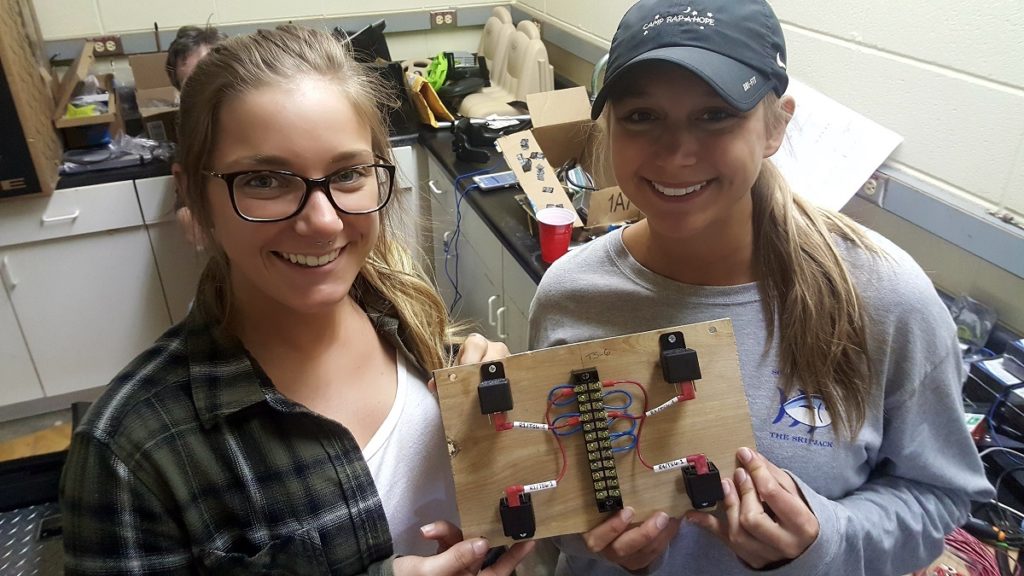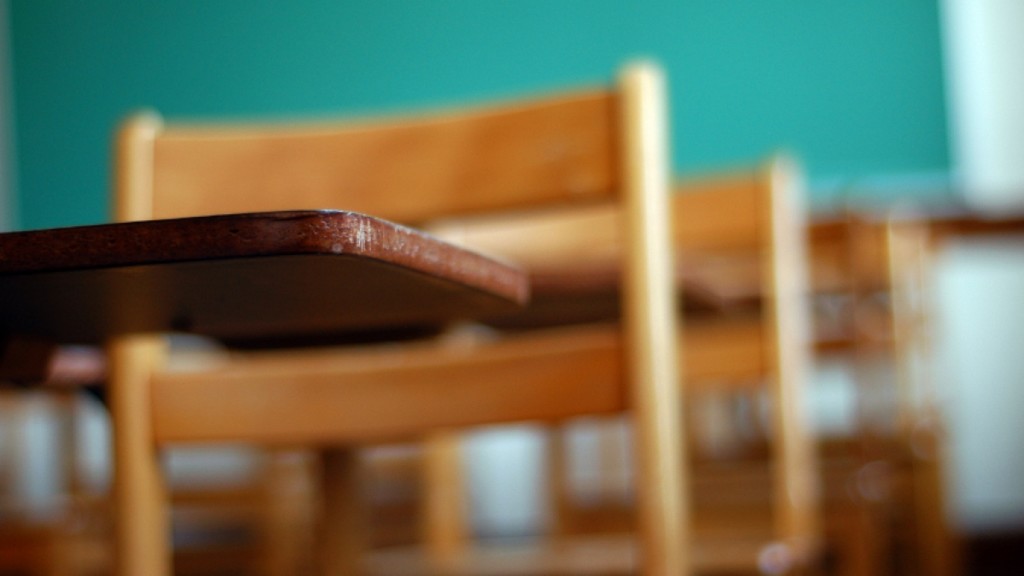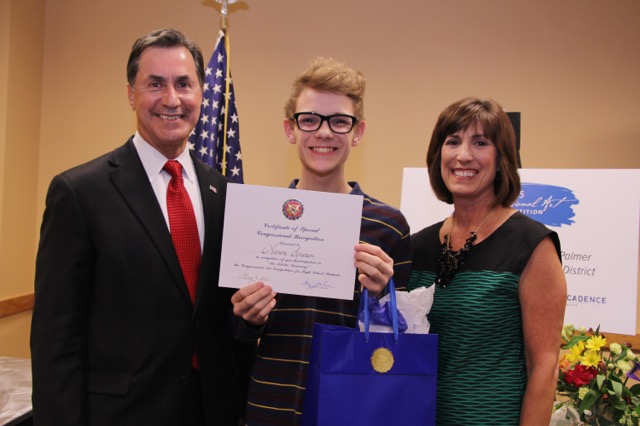Birmingham City Councilor takes 16 students to D.C. for Black Women’s Roundtable

Every year, Birmingham City Councilor Sheila Tyson takes students to 7th Annual Black Women’s Roundtable (BWR) Summit in Washington, D.C. in her quest to enrich the lives of young women through civic education. 2018 is no different, as Tyson made her way to D.C. on Wednesday with sixteen young Birmingham, Ala. ladies representing the Student Government Association from Parker and Wenonah High Schools to participate in five days of symposiums at the BWR, an intergenerational civic engagement network of the National Coalition on Black Civic Participation. Throughout their trip the group will learn the importance of entrepreneurship, issues of economic security and prosperity, income inequality and how they can contribute to solutions through civic engagement. Tyson and the group will join several members of Congress, and national community leaders from across the nation to voice their concerns on federal matters concerning their communities. Students will also meet with state representatives, including Alabama 7th District U.S. Rep. Terri Sewell, to discuss action steps to resolving issues in their communities and learn more on what policies and proposed funding is in place to address each of them. They will also be getting a private tour of the newest Smithsonian Museum, the National Museum of African American History and Culture. Tyson expressed the importance of building and organizing young women to learn the true power of their voices as forces of change ahead of the trip. “I’m beyond thrilled to be a part of this movement and travel with our young ladies to Capitol Hill and stand strong on issues within our communities,” Tyson said. “It is a privilege to teach them the many fundamentals of civic engagement and help them realize the power they hold with making changes not only in our communities, but our nation as a whole.” Parker High Principal Darrell Hudson said he’s excited that some of his school’s “shining stars’’ are making the trip, some of whom will be flying for the first time. “I think this is going to be a great opportunity. It will be a game changer’’ for them, Hudson said. Parker students on the trip include: Tykenya Todd, Lankea Burgin, Nariah Mayo, Tamika Green, LaTammara Davis, Zariah Threatt, Janecio Andrews and Markita Phillips. Wenonah students on the trip include: Courtlyn Scott, Aniya Kinnion, Jessica Moore and Shanyia Kimbrough. Tyson said the trip was made possible thanks to donors outside of Alabama.
South Alabama students turn toy vehicle into learning tool for children with disabilities

It started out as a senior project, and it ended up helping change lives. Every fall semester, senior engineering students at the University of South Alabama receive a list of group projects to consider for their Senior Design Capstone Project. “Students by this time have learned theory and ‘how-to,’” said Dr. David Nelson, professor and chair of mechanical engineering. “Now, they have to design it. In doing so, they can make a difference in someone’s life. It’s a great teaching tool.” For the 2016-2017 academic year, one of the chosen projects was undertaken with input from Hargrove Engineers and Constructors in Mobile. A Hargrove employee had learned of a handicapped child who needed a powered wheelchair and, through the Hargrove Adaptive Toy – or HAT – Project, contacted USA. The HAT Project, which was launched in 2016, takes off-the-shelf toy vehicles and modifies them for children with disabilities to practice with as they prepare to possibly use a powered wheelchair. “There are a number of children with disabilities who could benefit from a powered wheelchair, but a client must show they have the dexterity to operate it,” Nelson said. “Kids who’ve never used one are unlikely to pass the test to get one, so we wanted to provide a platform for them to practice.” “Reaching out to the USA College of Engineering was a natural fit,” said Michelle Jones, instrument engineer at Hargrove and executive director and project manager for HarGIVES, the company’s volunteer organization that sponsors the HAT Project. A College of Engineering graduate, Jones noted that Hargrove employs more than 100 South Alabama graduates. One of its more recent hires is Kent Bailey, a mechanical/piping engineer who graduated from USA last year after working on the HAT Project. The capstone project team included USA students from both mechanical and electrical engineering. “There were two challenges that really stood out,” Bailey said. “First, we, as mechanicals, had to have a basic knowledge of how the controls on the car worked, and that was a completely different language for us, so following what the electrical team was doing was difficult at times. “We also had challenges with scheduling,” Bailey continued. “With the electrical team having a different class schedule than us, we ran into an issue with when we could all get together. Building the car after we got the design finalized caused scheduling challenges as well, since the design was and still is evolving to adapt to different children. There were several instances when the mechanicals would have something in place and it would have to be modified to accommodate an update from the electricals.” Dr. Samuel Russ, associate professor of electrical engineering, underscored how valuable this type of collaborative effort is for future engineers. “The most important lesson the electrical engineers had to learn was that the work they did, such as selecting connectors and designing wiring, directly affected the mechanical engineers. So they had to learn to stop and ask, and they had to learn to respect the work of other engineering disciplines well enough to ask for their input. That sounds easy, but it is surprisingly hard to get engineers to do that.” Overcoming the challenges, the USA team successfully delivered its modified toy vehicle to Hargrove. “USA’s student team improved upon our original design and we used their changes to build eight cars last year,” said Hargrove’s Jones. “What sets many graduating seniors apart is experience – experience and passion,” Jones continued. “The HAT Project partnership gives real-world project exposure to these students that can make their resume stand out as well as give them a project to showcase in the interview process. That experience is invaluable. Retrofitting these toy cars for children with special needs is no easy task – it takes hard work, and hard work and the student’s dedication builds character. Many times, it is your character that helps students land good jobs – not just your skills.” For former students such as Bailey, it goes even deeper than practical experience and an edge in a competitive job market. “The personal satisfaction of having a finished deliverable was something the team always talked about and was motivation to make sure we provided the best product possible,” Bailey said. “It didn’t really sink in until I walked into the courtyard here at Hargrove one afternoon and saw a young lady driving the car that we built. There are not words to describe the excitement, not only on her face, but on her parents’ faces, too. Seeing that made every early morning and long night that we put into that car worth it, many times over.” According to Jones, through the volunteerism of South Alabama students, the HAT Project has been able to give eight specially designed cars to local children and physical therapy offices in the community. USA students who worked on the HAT Project are: in mechanical engineering, Kent Bailey, Kayla Bray, Ben Breland, Julius Pugh and Heather Turner; and, in electrical engineering, Victoria Antell, Emaleigh Sargent, Heath Skelton and Joe Wachob. Republished with permission from the Alabama NewsCenter.
Alabama students outcomes improving according to new report

Students currently enrolled in Alabama schools are outperforming their counterparts from 2005, suggests the 2017 Alabama Kids Count Data Book – Education Supplement. The supplemental report, released Tuesday by VOICES for Alabama’s Children, a nonprofit that advocates for child well-being in the Yellowhammer State, includes state and county data highlights on 20 key education indicators. It also includes a breakdown of these data indicators according to students living in poverty and those living above the poverty line, which is new to this year’s report. The supplement revealed state investments in early childhood education are making an impact on student performance in the later grades. Since 2008, enrollment in Alabama’s First Class Pre-K program has grown by over 400 percent. As a result, the increased number of students entering school ready to learn has resulted in fewer students needing to repeat the first grade and more students reading on a proficient level by the fourth grade. In the secondary grades, fewer students are repeating the ninth grade, dropping out of high school or engaging in risky behavior such as drug abuse and teenage pregnancy. “Alabama students have more opportunities for success today than in recent years, however, we are still lagging behind the rest of the country in improved education outcomes,” said Rhonda Mann, deputy director of VOICES for Alabama’s Children. “The Alabama Kids Count Data Book reveals a number of areas in education where investments are making a difference, and with continued support could improve student outcomes even more.” The report also reveals students living in poverty are falling behind their counterparts — they are more likely to repeat the ninth grade, miss more than 18 days during the school year and, ultimately, drop out. “The Alabama Kids Count Data Book reveals that poverty is the biggest barrier to student success, and unfortunately the academic achievement gap between those living in poverty and those who do not is growing,” said Rhonda Mann.
Students, parents and school board member speak out against Randall Woodfin

A lot has been said about experience in the race for Birmingham Mayor. In two new videos, students and a member of the Birmingham school board shine a light on their personal experiences with Randall Woodfin speaking about his time and actions serving as President of the Birmingham school board. While the hard facts speak for themselves, information like the Alabama State Board of Education noting the number for failing schools tripled while he was President and three different superintendents were hired and fired over the same period, these post go beyond facts and figures though and point to the personal side of Woodfin’s tenure. It all started last Monday when a voter posted on Facebook asking if anyone on the Birmingham Board of Education would share how Woodfin, also BOE member, got “along with them.” Fellow school board member Cheri Gardner was quick to respond. “I have worked with him for the last three and half years as a board member. I have known him for many more. I have always held him in high regard. It was only after l started to work with him as a board member did l truly meet the real person,” Gardner wrote in a Facebook comment. “What I learned is that he lies effortlessly. He is manipulative. Likes to [point] his finger in folks faces. Has tantrums when he doesn’t get his way. He has even challenged me into a physical fight. I will only speak for myself but hopefully others will see this and are willing to share their experiences.” The following day, Carlos Chaverst Jr., a local activist and Political Strategist at Touch Communications, sat down with Gardner for a Facebook live video to dive deeper into her accusations against Woodfin, probing her on the timing of her post and asking whether or not incumbent mayor William Bell paid her to write it Gardner explained she only said what she did, when she did because someone had stopped and asked the question. “If the post had not been there and no one ever asked me, I would not have said anything because I really didn’t want to get into the mayor’s race,” said Gardner. As to whether or not Bell paid her to write anything, “absolutely not. I have never been paid by any political candidate to do anything.” Then on Sept. 10, two Ramsay High school alums, Robyn Gulley, a sophomore are Birmingham Southern College and Joshua, a current UAB student, also took to Facebook to recount their personal experiences with Woodfin. They spoke of a time in 2014, when their high school principal Dr. Evelyn Nettles was placed on administrative leave for unknown reasons. The two go on to explain the timing was questionable as students were about to start AP tests and final exams and students needed to focus on performing well. When Woodfin, the president of the school board at the time, came to visit the school and put students at ease, Gulley claims he did the opposite. “Throughout the time he was talking to us I never felt a sense of genuineness and if it kind of hurt us in the end, it didn’t matter,” she said. Nettles herself took to the comments section to speak out against Woodfin. Good. Randall did nothing but try to sell out kids,” commented Nettles. In a second video, both students voiced their outright support for Bell. “Vote William A. Bell October 3, 2017,” the students said in unison. The comment sections to the videos, posted together on Facebook, reveal parents who share similar frustrations with Woodfin and his actions on the board: Rather than address the videos or comments on his actions, Woodfin instead blamed the Bell campaign. Woodfin faces Bell again at the polls Oct. 3.
U.S. students need more exposure to arts and music, test shows

When it comes to music and visual arts, American teenagers could use some help. The National Center for Education Statistics reported Tuesday that in 2016, American eighth graders scored an average 147 in music and 149 in visual arts on a scale of 300. Some 8,800 eighth graders from public and private schools across the country took part in the test, which was part of the National Assessment of Educational Progress, often called the Nation’s Report Card. Acting Commissioner Peggy Carr said the test shows students have a lot to learn in art and music and that no progress has been made since the same test was administered in 2008. “When I saw the results, clearly there is room for improvement, because clearly there is a lot of content that students weren’t able to interact with correctly,” Carr told The Associated Press. When asked to listen to George Gershwin‘s “Rhapsody in Blue,” only about half of the students were able to identify that the opening solo is played on a clarinet. Students who scored 182 were able to label all the eight notes in C major, students who got 150 were able to label one note. While most students could point to one or two structural differences between two mother-and-child portraits, they usually struggled to explain the technical approach and meaning in an artist’s self-portrait. “The average student does not know a lot of the content that was asked of them on this assessment,” said Carr. “It was a difficult assessment, a challenging assessment.” On the bright side, the achievement gap has narrowed between white and Hispanic students from a difference of 32 to 23 points in an average score in music and from 26 to 19 points in arts since the previous test. Girls continued to outperform boys. The black-white achievement gap, however, remained unchanged. While white students scored an average of 158, black students got 129 on the music test and the margin of difference was similar on the arts portion of the exam — 158 for white students and 128 for black students, “Every student should have access to arts education to develop the creativity and problem-solving skills that lead to higher success both in and out of school,” said Ayanna Hudson, director of arts education at the National Endowment for the Arts. “Arts education can be especially valuable for our nations’ underserved students, leading to better grades, higher graduation rates and increased college enrollment.” Randi Weingarten, president of the American Federation of Teachers, said visual arts help develop a child’s creative and critical thinking, and exposure to music can boost students’ graduation rates or academic results. She criticized the Trump administration’s plan to cut funding for after-school and summer programs aimed mostly at low-income families, as well a proposal to eliminate the NEA. “Marginalizing the arts is wrong and will prevent our children from growing up as well-educated, well-rounded citizens,” Weingarten said in a statement. The Education Department did not have an immediate comment on the test. Republished with permission of The Associated Press.
Daniel Sutter: Selling hope to students

America’s first sports-only university opened last fall, and has already closed. The case illustrates a challenging dilemma for higher education generally. Forest Trail Sports University, as reported by ESPN, allowed student-athletes to focus on training, practicing, and playing. Online classes were provided under subcontract from a separate university. Forest Trail was for-profit and may have been a total scam, although North Carolina authorities reported no criminal actions by the operators. I do not wish to dwell on the sad details here. Instead I want to focus on what Forest Trail was ultimately selling, namely hope. Forest Trail’s promotional pitch proved enticing to both students and parents – the opportunity to continue playing sports and possibly secure a scholarship at an NCAA institution. Junior colleges offer a similar hope. For some Forest Trail student-athletes, an athletic scholarship was their only path to college. Many universities similarly market hope to students. The hope sold to traditional students is economic, not athletic: college graduates earn on average 60 to 70 percent more than high school grads. Many Americans see a college degree as the only route to the middle class. Consider then the high school graduates who lack the test scores and college prep courses for admission to a traditional university, or those who flunk or drop out of college. These students resemble the athletes who just failed to land a scholarship. Should marginal students attend college? Serving marginally qualified students contributes significantly to the cost of higher education (through remedial classes) and lowers outcome measures (like six-year graduation rates). Here are two simple rules, which could significantly reduce higher education spending. First, allow students one attempt on the ACT or SAT exam, and permanently bar any student failing to achieve a reasonable minimum score from attending college. Second, never let any student who fails out enroll again. The U.S. Department of Education could tie universities’ eligibility for Federal student aid to adherence to these two rules. I doubt that these rules would prove popular (and I am not actually advocating them). Some students deemed ineligible could succeed in college, and there are some good reasons to allow students multiple attempts. For example, sixteen year-olds may not take the ACT seriously. College students may not understand how job prospects later will depend on earning a degree. And graduates of poor public schools are often unprepared for college. Americans believe that our nation is a land of opportunity. The chance to overcome disadvantages through hard work is an integral component of opportunity. Yet allowing opportunity creates potential problems. For example, marginal students may be better served by focusing on a job or vocational training instead of using savings or incurring debt to pursue a college degree they likely will never earn. Market competition normally works very well, but seems too quick to sell false hope, as in the Forest Trail case. However colleges as a group set lines for admission, some students will always just fail to qualify. They provide natural customers for a new program selling opportunity. Competing for marginal students can compromise the quality of higher education. Watering down content and inflating grades can help students pass courses they would otherwise fail. Selling essentially fake degrees makes employers incur costs distinguishing fake and legitimate degrees. If bogus degrees cannot be identified, the value of legitimate degrees will fall. The Federal government provides significant funding for college since passage of the Higher Education Act in 1965. Access to Federal student aid is now effectively part of educational opportunity. This only deepens the mess. Unscrupulous colleges like the now-defunct for-profit Corinthian Colleges can sell students bogus degrees paid for largely by Federal taxpayers. Economics can often suggest ways to improve programs, but other times we can merely identify unpleasant tradeoffs. Higher education policy involves tradeoffs between opportunity, cost, and efficiency. The false hope sold by America’s first sports university may be disgraceful, but rules preventing colleges from selling hope may be no more palatable. ••• Daniel Sutter is the Charles G. Koch Professor of Economics with the Manuel H. Johnson Center for Political Economy at Troy University and host of Econversations on TrojanVision. The opinions expressed in this column are the author’s and do not necessarily reflect the views of Troy University.
William J. Canary: Observing National School Choice Week

More than 1,000 students, parents, educators, and legislative and business leaders, observed National School Choice Week at the Alabama Capitol on Tuesday. People from across Alabama assembled to support school choice that gives parents the opportunity to benefit their children and communities. School choice is a tool not only for parents and their children but also for business because today’s students are tomorrow’s leaders and employees. The Business Council of Alabama supported the Alabama School Choice Coalition rally and supports scholarships, fully funded volunteer pre-kindergarten for all Alabama 4-year-olds, and charter schools. Alabama’s school choice opportunities began in 2013 with passage of the Alabama Accountability Act that includes giving children who attend under-performing schools the opportunity to attend schools of their choice. The Parent Refundable Tax Credit program gives parents whose child is zoned to a failing school the opportunity to receive a tax credit to transfer their child to a nonfailing public or private school. The Tax Credits for Contributions to Scholarship Granting Organizations program allows low-income students who are zoned to failing public schools to receive scholarship to attend schools of their choice. Last year’s School Choice and Opportunity Act created an application process for local school boards to establish up to 10 new or conversion public charter schools. This year we support efforts to take a fresh look at teaching and ways to reward our valuable teachers. We in the business community continue to pledge to be partners with education because we all have a stake in the future. • • • William J. Canary is president and CEO of the Business Council of Alabama
Arnold Mooney introduces bill to protect education privacy

On Wednesday, Alabama Rep. Arnold Mooney of Birmingham held a news conference at Jefferson State Community College in Birmingham to announce a bill aimed at protecting the privacy of parents and students across the state. Mooney worked hand-in-hand with a number of organizations to create the bill, including the Eagle Forum of Alabama, the American Civil Liberties Union of Alabama, the Southeast Law Institute, and Education Liberty Watch. The bill sets limits on what data may be collected and shared, what data may be used on a local level for specific academic purposes and on state government and data collection systems in order to “protect students and parents from invasive practices.” “It protects the civil liberties of students and parents, which are foundational to strong academics, freedom of speech and progress,” Mooney said during his announcement. “It limits the collection of certain sensitive information and the disclosure of personally identifiable student information to third parties and provides for enforcement and penalties.” Mooney noted that there’s a lack of sufficient privacy protections for students in Alabama’s public schools on the state and federal level. As technology has progressed at a rapid pace, legislation has not kept up in order top protect the privacy of vulnerable users. “Students are being used as pawns in experimental programs, tracked by the government and tracked by corporations tracking these students to sell and research their products,” Mooney said. “Parents who send their children to public school should not have to give up their privacy rights to receive an education in Alabama’s public schools.” The Student and Parent Privacy Protection Act seeks to keep data and student information on the local level, prohibit the broad sharing of personal data, prohibit the collection of “highly sensitive information” and the “invasive overreach of outside parties,” provides parents and students access to monitor their personal records. “Our houses of learning should be places where freedom of thought and creativity are celebrated to the highest degree,” said Deborah Love, executive director for the Eagle Forum of Alabama. “This liberty and creativity in education cannot be respected and maintained today without privacy protections.” “Every person should have the right to decide who they want to share personal, private information with,” said Susan Watson, executive director of the American Civil Liberties Union of Alabama. “Privacy is not about keeping secrets, it is about maintaining control over our own lives.”
Alabama’s 2015 Congressional Art Competition winners selected

Each spring, high school students from across the state submit their artwork to the annual Congressional Art Competition for a chance to represent their congressional district in the U.S. Capitol with their artistic talents. Sponsored by the Congressional Institute to recognize and encourage artistic talent in each congressional district, more than 650,000 high school students have participated since it began in 1982. Winners are recognized both in their district and at an annual awards ceremony in Washington, D.C. The winning works are displayed for one year at the U.S. Capitol. Alabama’s 1st Congressional District Winner: Siobhan Johnson Piece: “Brotherhood’s Past” High School: St. Paul’s Episcopal in Mobile, senior “The Congressional Art Competition is a fantastic way to highlight the artistic talents and achievements of our nation’s students,” said U.S. Rep. Bradley Byrne. “I am especially proud to sponsor the 1st Congressional District Art Competition, and I am always so impressed by the high quality art that our local students are producing.” Alabama’s 2nd Congressional District Winner: Kaitlyn Tarver Piece: “America” High School: Booker T. Washington Magnet School in Montgomery, senior “I’m proud to celebrate the artistic abilities of students throughout Alabama, and in particular Kaitlyn and Ashton,” U.S. Rep. Martha Roby said. “These young women have displayed impressive talent, and it’s an honor to join their families and friends in commemorating this momentous occasion. I want to also express my sincerest gratitude to Kaitlyn’s and Ashton’s art teachers, Emily Thomas at Booker T. Washington and Anna Beasley at Houston Academy. Their commitment to helping their students experience the arts truly makes a difference, and I am grateful for their efforts.” Alabama’s 3rd Congressional District Winner: Heather Caldwell Piece: “Love At First Sight” High School: Handley High School “Every year, I look forward to being a part of the 3rd Congressional District Art Contest,” said U.S. Rep. Mike Rogers. “We have some really artistic young men and women in East Alabama, and this event is a great way to showcase their talents. I appreciate all the students who participated and the hard work they put in to creating their artwork.” Alabama’s 4th Congressional District Winner: Cadley Jackson Piece: “Reflections on my Childhood” High School: Guntersville High School, senior “This is a great event where we get to recognize art students in our district for their great accomplishments,” U.S. Rep. Robert Aderholt said. “Sometimes it is not always well publicized but we hope this brings attention to the great artists who are among us here in our own congressional district.” Alabama’s 5th Congressional District Winner: Julie Davidson Piece: “Waiting for a Cue” High School: James Clemens High School, senior U.S. Rep. Mo Brooks said, “I’m so thankful for the support of our community, particularly the Huntsville Museum of Art, and their work to facilitate the Congressional Art Competition each year. A panel of judges juried the 243 pieces of artwork submitted and selected the winner, Ms. Julie Davidson of James Clemens High School. It was a pleasure to recognize Ms. Davidson’s achievements — I look forward to seeing her artwork displayed in the U.S. Capitol throughout the next year representing Alabama’s 5th District. Additionally, I was proud to commend the honorable mentions and thank the art educators who empower these students to succeed. Congratulations to Julie and to all of the honorable mentions, I hope you will continue to excel in your artistic pursuits.” Alabama’s 6th Congressional District Winner: Aaron Squires Piece: “I Am Free Now” High School: Pelham High School, junior “I am proud to support education and the young artists that are participating in this competition,” said U.S. Rep. Gary Palmer. “The Birmingham area has a thriving arts community and these young people already are part of it. They will continue to make important contributions in the years to come.” Alabama’s 7th Congressional District Winner: Samantha Bearden Piece: “Discovering Happiness” High School: Minor High School “Each year, this competition reflects the extraordinary talent of the students of the 7th Congressional District and I am proud to support them in exploring their artistic talents,” U.S. Rep. Terri Sewell said.


